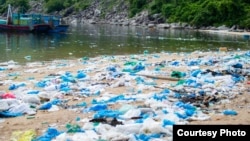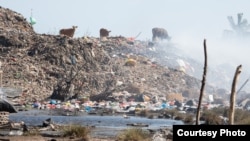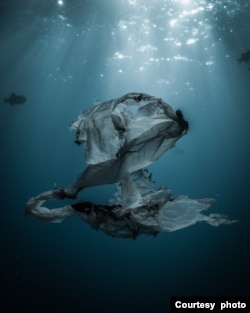There is a lot less plastic pollution floating on the surface of the oceans, according to a recent study published in the scientific journal, Nature Geoscience. And while that sounds like good news, it means there must be much more plastic deep within the oceans, the study added.
The report also indicated the amount of plastic that reaches the sea is 10 times less than some scientists previously thought.
Still, using 3D computer modeling of beaches, sea surfaces and ocean depths to determine the flow of the plastics, the researchers estimated that about a half million metric tons of plastic makes its way into the oceans each year.
“We’re accumulating more and more plastics in the environment,” said Mikael Kaandorp, the lead author and a research scientist at Forschungszentrum Jülich, a research institute in Germany.
Earlier this year, the 5 Gyres Institute, a California-based group that focuses on reducing plastic pollution, published a study that estimated similar amounts of plastic floating in the ocean.
“Even with the lower estimates of the amount of plastics entering the ocean each year, we are still faced with its visible and widespread impacts globally,” said Britta Baechler, associate director of oceans plastics research with the Ocean Conservancy in Portland, Oregon, in the northwestern U.S. Baechler, who did not take part in the study, told VOA, “They’re pervading coastlines and critical habitats, as well as smothering corals and invading sensitive ecosystems.”
According to the report, more than 3 million metric tons of surface plastic could remain in the water for decades. And plastic going into the oceans is likely to increase by 4% each year, meaning sea surface plastic could double within 20 years.
Most of the plastic is larger and likely to be concentrated in huge garbage patches in ocean gyres formed from circulating ocean currents.
About half of the plastic is from fishing gear, such as nets and ropes. The other half comes off the land.
They enter from the coasts “as non-watertight landfills or maybe waste dumped into the sea by rain runoff in coastal cities or carried into the ocean by the wind," said Kaandorp.
“I’ve seen shampoo bottles and wildlife interacting with all different sizes of plastic pollution,” said Erica Cirino, communications manager for the Plastic Pollution Coalition in Washington.
Marine animals can get tangled in the debris and become sick or injured from ingesting plastic.
Cirino, author of the book, Thicker Than Water: The Quest for Solutions to the Plastic Crisis, thinks the study is not providing the full picture of the problem.
She points out that two kinds of plastic commonly found in the oceans were excluded from the research, which focuses more on sea surface plastics, she said. The first is PVC, (Polyvinyl chloride) used for items like pipes, bottles and packaging, and the other is PET (Polyethylene terephthalate) used for fibers in clothing and in containers for liquids and foods.
“These are denser than water and so they are actually more likely to be suspended below the surface and ultimately sink,” Cirino told VOA.
There’s also a huge amount of tiny pieces of microplastic floating in the oceans, which are consumed by fish and other sea life. As they enter the marine food chain, they can pose a risk for human health.
“You can see these little flecks of brightly colored plastic that looks like confetti on the surface of the ocean,” said Lisa Erdle, director of science and innovation at the 5 Gyres Institute. “You can see microfibers that are coming from ropes and clothing. Close to shore, near cities, you see fragments of plastic from car tires.”
Kaandorp said his study underscores that the plastic pollution problem will only get worse if action isn’t taken now.
“It’s going to take a really long time before these plastics actually are removed from our seas,” he emphasized.
“[What] we need to be looking at is what types of products can be eliminated,” Baechler of the Ocean Conservancy said. “Which ones don’t need to be made of plastic. There's a lot of leakage of plastics into the environment since not all plastics are recyclable."
Meanwhile, representatives of 175 nations are writing a global treaty to restrict the explosive growth of plastic pollution. The legally binding agreement would commit those countries to clean up plastic waste and to improve recycling as well as curb plastics production.











